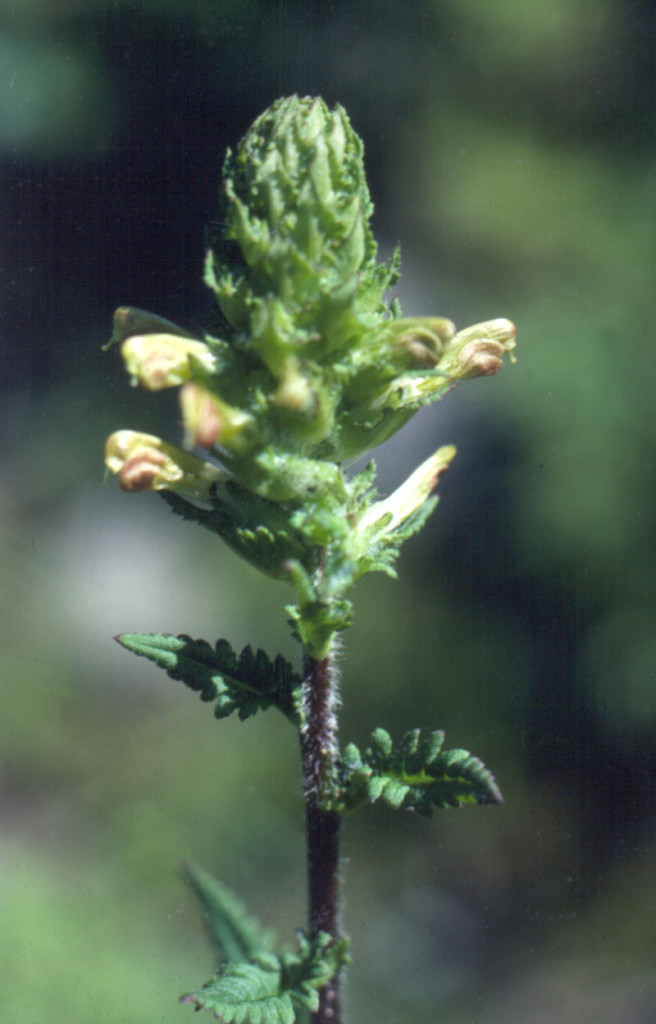BOSTON — From picturesque coastal estuaries of Cape Cod to the soaring White Mountains, much of New England’s rich native flora is fighting for survival against increasing odds, according to what conservationists call the most comprehensive accounting ever made of the region’s plant life.
The report, to be released Thursday by the New England Wild Flower Society, studied more than 3,500 known plant species and determined that 22 percent are considered rare, in decline, endangered or possibly extinct. Many plants also range over a much smaller geographical area than they once did.
Another statistic that researchers found alarming: More than 30 percent of current plant species are not native to the region. Non-native or invasive species often compete with and crowd out existing plants.
The report’s authors cite numerous risk factors, including familiar ones such as climate change, land development, forest clearing and pesticides. But among the lesser-known threats to plant life are dams that alter floodplains; commercial harvesting for pharmaceutical use; and salt marsh dieback, a complex process of erosion that already has affected more than 80 percent of Cape Cod marshes, the report said.
Imperiled plants carry a variety of exotic or obscure names: Goldenseal and American Ginseng, gathered for culinary or medicinal purposes in New England’s northern hardwood forests; Jesup’s milk-vetch, a federally endangered species found in three places along the Connecticut River and nowhere else; sandplain gerardia, birds-foot violet and wild goat’s-rue, all native to drier grasslands; and saltpond pennywort, one of many rare plants that reside in marshy coastal habitats.
Researchers say Maine has about 2,100 plant species, of which about 67 percent are native to the state. The alpine bearberry, listed as threatened by the state, is said to be at risk from climate change and trampling by hikers among other things. Places where it can be found include Mount Kahadin and Saddleback Mountain.
The decline of these and other species have enormous ramifications to wildlife and humans, the report warns, because of the obvious if underappreciated role plants play in complex ecosystems.
“You actually have to save the plants because that is the base of the food chain,” said Debbi Edelstein, the society’s executive director. “And that’s what all of those critters that you are thinking you want to save, whose habitat you want save, are depending on.”
Maine’s threatened alpine bearberry plant helps support Bicknell’s Thrush, shrews and the snowshoe hare among other animals. Furbish’s loutwort, a state and federally endangered plant, is at risk from dams, agricultural clearing and pollution. The plant, native to river and stream habitats including Saco River Preserve, helps support a number of animals including the Bald Eagle and minks.
The nonprofit organization, based in Framingham, Massachusetts, said it compiled the information through observations made by hundreds of volunteers and professional botanists throughout New England and data culled from voluminous historical surveys, some as far back as the botanical journals of famous naturalists such as Henry David Thoreau.
Douglas Tallamy, a professor of entomology and wildlife ecology at the University of Delaware who was not involved with the study, said the estimate that 31 percent of New England plants are non-native appears consistent with other parts of the country.
He said humans are often guilty of displacing native plant communities through development while adorning their gardens with plants imported from overseas.
“We have come to see plants simply as decorations and we just want to have pretty landscapes, but in doing that we have forgotten all the ecological roles that they play,” Tallamy said.
The report recommends additional research and documentation of New England flora, improved public awareness of invasive species, and stronger conservation laws and land management measures where needed.
“It’s not all gloom and doom,” said Elizabeth Farnsworth, the organization’s senior research ecologist. The overall diversity of New England plant life still compares favorably with many other regions in the U.S., she said, and many plants continue to flourish in part because of successful ongoing conservation initiatives.
Robbins cinquefoil, a small plant related to the rose and once so rare that 95 percent could be found within a 1-acre site on New Hampshire’s Mount Washington, fell victim over the years to poachers and hikers who trampled it underfoot. Placed on the federal endangered list in 1996, the plant had a resurgence after the U.S. Fish and Wildlife Service, the White Mountain National Forest and the Appalachian Mountain Club worked to divert a popular hiking trail and create a barrier to shield the plant. Today, more than 14,000 inhabit the site, the report said.
Individuals can help, Farnsworth said, simply by planting a native shrub on their property or teaching their children to appreciate native plant life.
“We can begin to reverse these declines,” she said.
Send questions/comments to the editors.



Success. Please wait for the page to reload. If the page does not reload within 5 seconds, please refresh the page.
Enter your email and password to access comments.
Hi, to comment on stories you must . This profile is in addition to your subscription and website login.
Already have a commenting profile? .
Invalid username/password.
Please check your email to confirm and complete your registration.
Only subscribers are eligible to post comments. Please subscribe or login first for digital access. Here’s why.
Use the form below to reset your password. When you've submitted your account email, we will send an email with a reset code.